What is the number one cause of distracted driving car accident deaths? A Pennsylvania Insurance Company did a study in 2013 about the most common cause of distracted driving the past two years leading to car accident deaths, posted in the Insurance Journal in 2013.
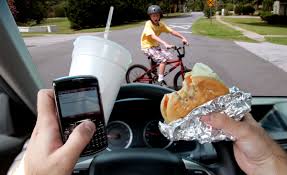 The study showed that contrary to popular belief, daydreaming was the number one cause of distraction for drivers involved in fatal car accidents from 2010-2011. I think this would probably also include sleeping or falling asleep at the wheel – too tired. This is probably more common because it has to do with the trucking industry, where truckers have to drive a long time and have mandatory breaks while driving requiring them to sleep or rest.
The study showed that contrary to popular belief, daydreaming was the number one cause of distraction for drivers involved in fatal car accidents from 2010-2011. I think this would probably also include sleeping or falling asleep at the wheel – too tired. This is probably more common because it has to do with the trucking industry, where truckers have to drive a long time and have mandatory breaks while driving requiring them to sleep or rest.
- 62% – Day Dreaming or Lost in Thought
- 12% – Cell Phone Usage
- 7% – Outside Person or Event
- 5% – Other Occupants in Car
- 2% – Using A Navigational Device or Headphones
- 2% – Eating or Drinking
- 2% – Adjusting Audio or Climate Controls
- 1% – Adjusting Mirrors or Seats
- 1% – Pets or Insects in Car
- 1% – Smoking Cigarettes
The study was based largely on the police officer’s judgment at the time of the crash and could be underrepresented of the true numbers because most people will be unwilling to say they were distracted at the time of a car accident especially in one where the other driver dies. The use of cellphone related car accidents is probably higher given the negative response around texting and driving some people may be hiding the fact they were using their phone.
This is just a reminder of the many distractions in your car that could be taking your attention from driving carefully to keep you and other drivers around you safe. One second of distractions could be the difference between you seeing a stop sign, a person crossing the street, a car stopped in front of you, or a car merging into your lane.
Here are some tips you can use to drive safe and avoid car accidents:
- Make sure other drivers around you see you – don’t drive in their blind spots.
- Anticipate cars merging into your lane to give them room.
- Keep your pets in the back seat.
- Set your music up on your phone’s playlist before you start driving.
- Keep your eyes on the road.
- Explain to your children the dangers of driving and the reason you need absolute quite while driving.

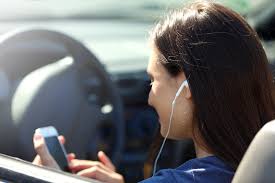 What is somewhat misleading is the fact that you can wear blue tooth enabled headphones and listen to your iphone podcast or music but you cannot wear chorded headphones even though they both function basically the same. I guess the reasoning behind this is that the chord could cause a driving hazard, which could cause a car accident.
What is somewhat misleading is the fact that you can wear blue tooth enabled headphones and listen to your iphone podcast or music but you cannot wear chorded headphones even though they both function basically the same. I guess the reasoning behind this is that the chord could cause a driving hazard, which could cause a car accident.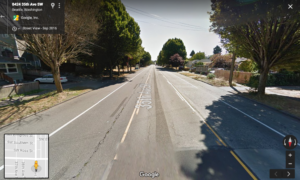 How far can you go in a turn lane to make a turn? If you are planning on taking a left turn into a business in a turn lane, you cannot use this lane unless the business you are turning into is less than 300 feet away or about the length of a football field. This is not very far.
How far can you go in a turn lane to make a turn? If you are planning on taking a left turn into a business in a turn lane, you cannot use this lane unless the business you are turning into is less than 300 feet away or about the length of a football field. This is not very far. It’s not too hard to find a lawyer to represent you for your car accident injury case. In fact, it can be really quite easy. Today we can do a whole lot of different things to sign clients from other states. We can talk on the phone, video conference call, send docusigns, and send emails with documents straight from our phones in a second.
It’s not too hard to find a lawyer to represent you for your car accident injury case. In fact, it can be really quite easy. Today we can do a whole lot of different things to sign clients from other states. We can talk on the phone, video conference call, send docusigns, and send emails with documents straight from our phones in a second.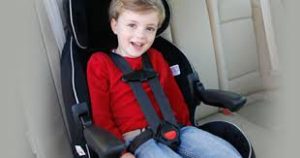 The reason behind using a car seat or booster seat and when to graduate your child is to keep our children safe in car accidents. A normal seat belt will not protect a child that is too small to actually realize the safety benefit of the seat belt, like full grown adults can. The reason is that seat belts are positioned with restraints for an adult and are not adjustable for a small child. The child could fall through the straps if there is a car accident and be severely injured.
The reason behind using a car seat or booster seat and when to graduate your child is to keep our children safe in car accidents. A normal seat belt will not protect a child that is too small to actually realize the safety benefit of the seat belt, like full grown adults can. The reason is that seat belts are positioned with restraints for an adult and are not adjustable for a small child. The child could fall through the straps if there is a car accident and be severely injured.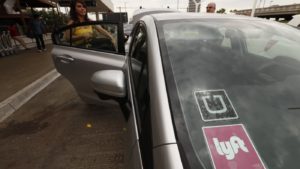 Who is going to pay for your medical bills right now? The defendant’s insurance, if you are hit by another car while riding in a Lyft or Uber, will not pay for your medical bills immediately. This is because they will only make one settlement payment to you that will encompass compensation in full for medical bills, lost wages, and pain and suffering, among others. In order to maximize your recovery, you should wait until you no longer require any further medical treatment to settle your case with the defendant’s car insurance. They will not pay your right away for medical bills so don’t expect them to, even though they will in the end (there is an exception if you are a passenger of an at fault vehicle, a pedestrian, or a bicyclist hit by a car).
Who is going to pay for your medical bills right now? The defendant’s insurance, if you are hit by another car while riding in a Lyft or Uber, will not pay for your medical bills immediately. This is because they will only make one settlement payment to you that will encompass compensation in full for medical bills, lost wages, and pain and suffering, among others. In order to maximize your recovery, you should wait until you no longer require any further medical treatment to settle your case with the defendant’s car insurance. They will not pay your right away for medical bills so don’t expect them to, even though they will in the end (there is an exception if you are a passenger of an at fault vehicle, a pedestrian, or a bicyclist hit by a car).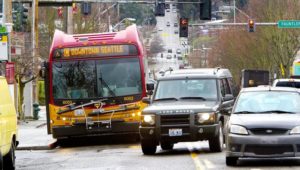 Actually, buses do have more rights than other cars. When a bus signals it is re-entering the flow of traffic from a stop, the drivers behind the bus going the same direction must yield to the bus re-entering traffic. This does not mean that a bus has the right of way to move over into your lane of travel and move wherever they want. This code applies to re-entering the flow of traffic not moving around the flow of traffic.
Actually, buses do have more rights than other cars. When a bus signals it is re-entering the flow of traffic from a stop, the drivers behind the bus going the same direction must yield to the bus re-entering traffic. This does not mean that a bus has the right of way to move over into your lane of travel and move wherever they want. This code applies to re-entering the flow of traffic not moving around the flow of traffic.